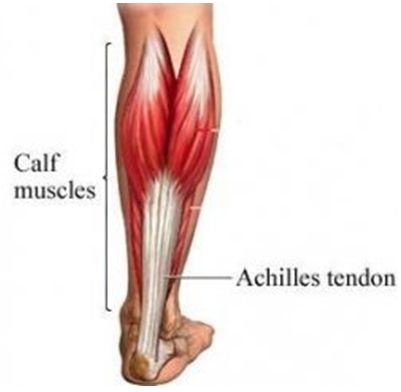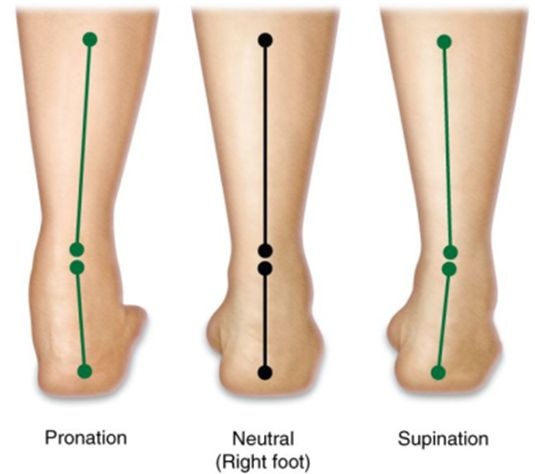Achilles Tendinitis
Text from “Running Doc’s Guide to Healthy Running”, from Dr. Lewis G. Maharam, MD.
 Any sport that keeps you on your feet and uses a pushing-off motion can produce Achilles tendon trouble. Orthotics are usually prescribed, but stretching is always your first defense.
Any sport that keeps you on your feet and uses a pushing-off motion can produce Achilles tendon trouble. Orthotics are usually prescribed, but stretching is always your first defense.
The Achilles tendon, which is formed from your calf muscles, can be pushed beyond its limits and become inflamed. That’s the tendinitis to wich most athletes ascribe pain. There can also be some swelling tendinosis, or chronic tendinitis, above the upper heel. But every time the tendon gets inflamed, and certainly every time the pain comes from more serious microtears in the overused tissue that can easily be mistaken for tendinitis, the Achilles grows just a little weaker.
 What brings the condition on besides simple overuse? The Achilles is vulnerable to misuse. Designed to do its job of guiding the heel in a vertical plane, it’s intolerant of the rolling of the ankle when it overpronates (rolls inward) or supinates (rolls outward). Stretching and an orthotic can help prevent the inflammation by biomechanically allowing the tendon to pull in proper alignment.
What brings the condition on besides simple overuse? The Achilles is vulnerable to misuse. Designed to do its job of guiding the heel in a vertical plane, it’s intolerant of the rolling of the ankle when it overpronates (rolls inward) or supinates (rolls outward). Stretching and an orthotic can help prevent the inflammation by biomechanically allowing the tendon to pull in proper alignment.
But a calf muscle routinely loosened by conscientious stretching every day and after a workout cuts the tendon some slack, particularly in stiffer athletes, reducing the tendon’s role as a shock absorber – for witch it’s not very well suited anyway.
So on those hectic days when stretching seems too much of a bother, remind yourself that a neglected and partially torn tendon needs to rest and heal in a cast for six to eight weeks unless you like courting a rupture.
And if that tendon doespop? The gulf between the two ends creates a hole you can actually feel. A clock has just started ticking, during which the tendon’s two ends will drift apart. As soon as possible you must decide if you want the rupture repaired by surgical reattachment of the ends – the best choice for most athletes. After the operation, you will have to wear a cast or cast boot at first and then undergo probably 9 to 12 months of therapy. The sooner the surgery’s done, the easier the repair. Or you can just go into a cast for maybe 8 to 12 weeks and accept whatever healing nature is able to provide – probably a weaker result and longer recovery. Given all this, a couple of minutes of prevention doesn’t seem like such a bother after all...
So what do you do if stretching alone doesn’t work? The longer you take before you seek help, the longer the problem will take to fix. All structures in the body constantly remodel (at different rates). The Achillles tendon gets its strength by its fibers lining up in parallel. In its originating calf muscles are inflexible, living in an environment of overpronation and inflammation (tendinitis), remodeling proceeds with the fibers lining up every which way instead of parallel. This results in a weakened, swollen, painful tendon, which is the definition of tendinosis (instead of tendinitis). This tendon is more easily prone to tear, and you will need a full-length flexible orthotics (worn full-time instead of just when running) and physical therapy for eight or more weeks minimum.



